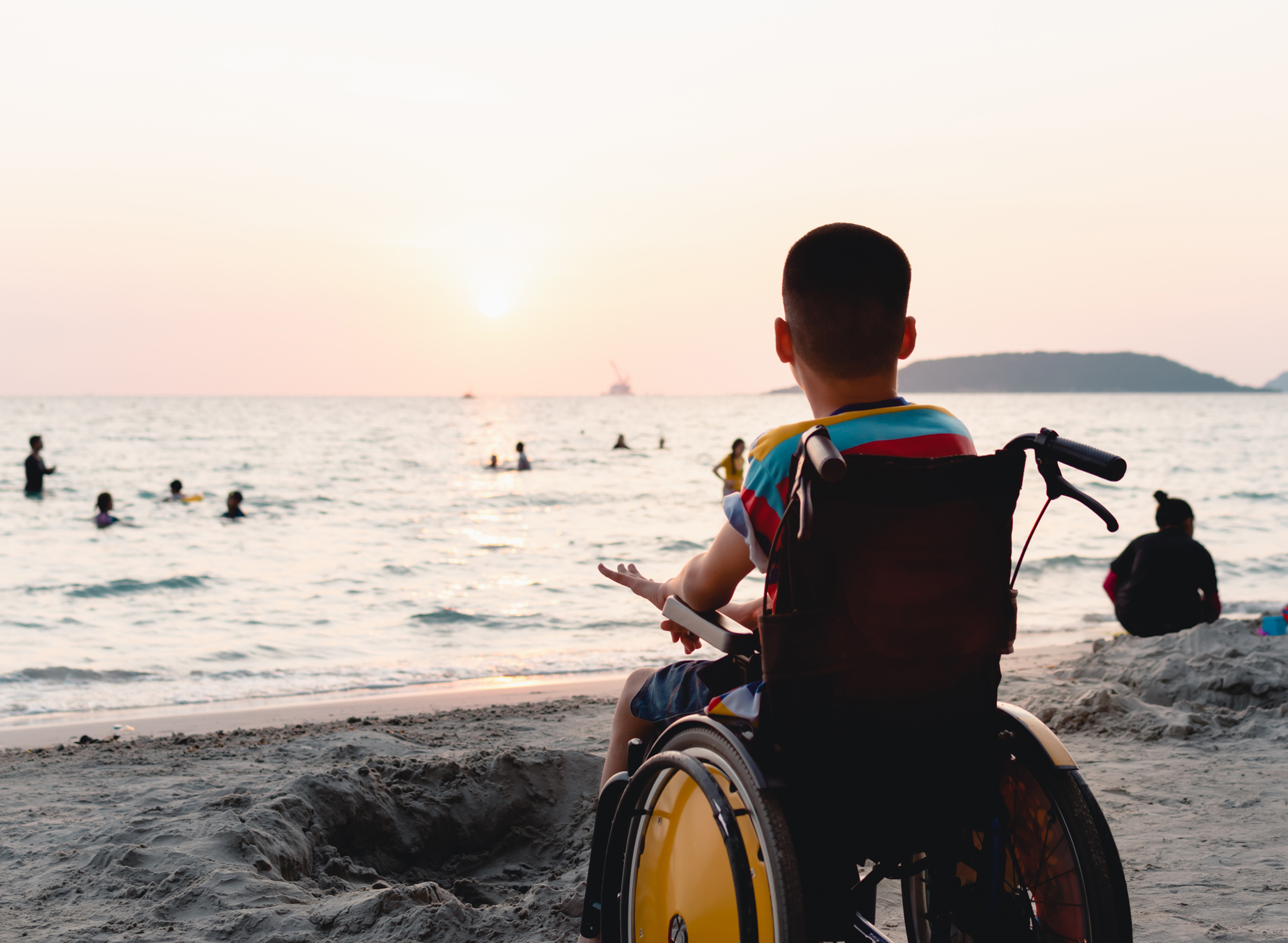Media Center
Ten Steps to Deal with Our Disabled Child

Written by: Dr. Shaher Z. Al Shehri, Consultant Family and Community Medicine and Specialist of Rehabilitation.
The moment a family hears that one of their children will be born with a disability, reactions vary between positive and negative. It is known that the first reaction may have an impact on the course of the child’s rehabilitation, as it may benefit or harm him.
Negative reactions may lead to a loss of time and a decrease the chances of good rehab, especially if we know that early intervention has a major role in the rehabilitation process. Therefore, we list below the most important steps for the family to deal with its disabled child. I made it into ten steps, to make it easier to remember and benefit from.
Step one: Patience and dealing with reality:
When a person faces a calamity with patience and belief; he gets rewarded with the better in this life and in the hereafter. Injury of children is among of the most severe calamities that a person finds. But patience, in addition to the reward that accompanies it, has a great benefit for the child, and this is achieved by the parents living the reality, and moving forward from the two phases of shock and denial which, if prolonged, will waste the child’s opportunity in the rehabilitation process.
Step two: Identifying the diagnosis of disability and avoiding wandering between clinics in search of changing the diagnosis:
Accurately diagnosing the child’s condition is important in the rehabilitation process and knowing the future of the condition. In fact, ensuring the correct and accurate diagnosis is the duty of the family in the first place.
However, some families spend their time wandering between clinics and consultants, sometimes even moving between cities and countries.
The family may have some excuse because of the absence of specialists in some disabilities, but this should not lead to searching for a change in the diagnosis out of denial. Instead, they should start looking for appropriate rehabilitation programs, in order to correct the disability and identify the strengths and weaknesses of the child.
Step three: Identifying families with a similar situation:
From experience, the familiarization of a family with a disabled child with a number of families whose children have the same problem, is an important step. Here are some of the benefits achieved:
- Reducing the psychological impact of the problem.
- Gaining experience quickly.
- Identifying the obstacles facing the family and how to overcome them.
- Learning about the special needs of a disabled child and how to obtain them.
- Exchanging good opinions about the development of services provided to children with disabilities and delivering them to the to the relevant authorities.
Step four: Training and learning the best ways to deal with a disabled child according to his disability:
Disability is a condition inherent to the child in all stages of his life, and its severity varies from case to case for various reasons, including dealing with the case, and following appropriate rehabilitation programs.
Therefore, the family’s keenness to read and learn about the latest methods of rehabilitation is important in the rehabilitation of their child. We would prefer that the family acquire some books of simple and practical language and modern information, and that they are chosen in consultation with specialists or families with children with the same disability.
Families should also be keen to visit trusted scientific websites that provide the latest reliable information directed to the family about disability and rehabilitation methods, and try to attend lectures and workshops concerned with this subject.
Step five: Prepare all family members and relatives to deal with the disabled child:
The disabled child is a member of the family and must remain so. On the other hand, the family must strive to make the disabled an active member, regardless of his disability. Therefore, all family members must be trained to deal with him/her and involve them in the rehabilitation process.
It is also necessary to educate all relatives about dealing with this child. This process may be very difficult, but if the family puts it within its goals, it will be able to achieve it.
Step six: Integration of the child in all activities of life:
How beautiful it is when you see a family taking their disabled child with them in a place outside home and they see the happiness on his face. No shame stopped them from taking him out with them, nor the expectation that they would encounter some harassment. This, in turn, contributes to raising awareness among societies about proper dealing with persons with disabilities.
Step seven: Avoid excessive pampering:
Just as neglecting disabled children is unacceptable and harmful, pampering them leads to the same harm. Therefore, it is necessary to deal with them like dealing with healthy children of the same ages, accustom them to live alike, and raising them up in a sound and moderate upbringing. They must hear the word (no) as they hear the word (yes).
Step eight: Contribute to Community Based Rehabilitation:
The experience that the family of a disabled child gains over time is important and powerful. Contributing to presenting it to others is a way of relieving distress. This experience may be presented through a lecture, a training course, or through the Internet and social media, or the printed media.
Someone might say: I do not have the ability to write much about my experience; So, we say to him: convey the experience in the way you see fit.
Step nine: Documenting the Experience and Benefiting Others:
What I liked about Western society is its concern for documenting its experiences and communicating them to others. I found a large number of guides for families of disabled people with different disabilities. The writers of these guides were among those who experienced disabilities, either with themselves or with their children.
I really found a great benefit from these books, because they came out of real suffering and special experiences. Therefore it is necessary for parents to devote some of their time to document their stories and experiences.
Step ten: Learning about the religious jurisprudence related to disability:
Disability is associated with a number of jurisprudence rulings regarding acts of worship and transactions. Examples of these provisions: the provisions of acts of worship for those who are not mentally disabled, the provisions related to private parts, and others.
Contact Us
We are happy to receive your enquiries, notes or complaints.
